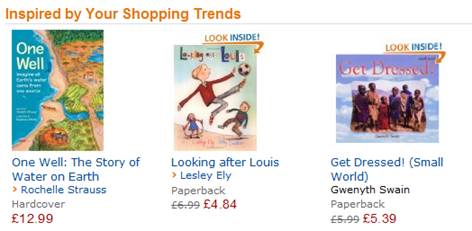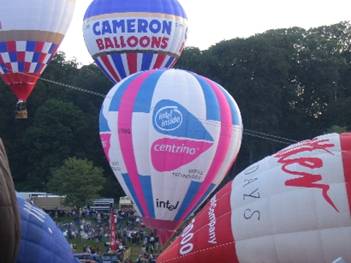Below-the-line promotion (BTL)
By using below-the-line promotion techniques the firm can keep control over its promotional efforts and does not have to pay intermediaries and external agencies. As a result, BTL promotion is relatively cheap compared to ATL promotion.
BTL promotions target individuals based on their needs or preferences and can lead directly to sales. The results can be easily measured providing valuable data to estimate return-on-investment.
Examples of BTL promotion are:
- Sales promotion
- Direct marketing and direct mail
- Public relations (PR)
- Sponsorship
- Personal selling
- Branding and merchandising
- Packaging
- Telemarketing
- Trade fairs and exhibitions
Sales promotion
Sales promotions are temporary methods to improve sales by attracting new customers and encouraging existing customers to purchase more. Although offers may be short-term, there is a belief that trial of the firm's product will to create brand loyalty.
Naturally sales promotion is not without cost. Discounts and free samples, for example, reduce a firm's profit margin.
Sales promotion can be divided into two types:
- Into the pipeline: these are promotional activities designed to encourage retailers and wholesalers to stock the product. These include incentives such as discounts, credit terms, prizes, merchandising and display materials and equipment.
- Out of the pipeline: these are promotional activities carried out by manufacturers to encourage customers to buy in greater quantities. These include incentives such as discounts, free gifts and samples, BOGOF offers (buy one, get one free), vouchers, competitions.
Point-of-sales promotions are promotional activities directed at customers in retail outlets, such as special displays, tastings, demonstrations and sales presentations. These are normally combined with vouchers and other special offers on purchases in that shop. This merchandising is to encourage impulse buying.
Direct marketing
Whenever you buy a product, your information may be collected somewhere in the process, especially if the purchase is online. Firms like to collect as much information about you as they can, because this information can be even more valuable than the purchase itself and you may not always notice the small print about sharing your details with 'trusted partners', meaning that you are likely to be targeted by a range of additional organisations in the future.
Firms use loyalty cards to gather data about your purchasing behaviour, which they can use to target you with additional offers or sell that information to other businesses. Even governments sell information gathered about you using information from the census, student cards or passport and driving licence applications.
Direct marketers target customers without using traditional formal channels of advertising, such as TV, newspapers or radio. Firms communicate straight to with consumers with advertising techniques such as fliers, catalogues and promotional literature. If an advertisement asks the customer to respond in some way, such as calling a free phone number or visiting a website, this is called direct response advertising.
 Of all the forms of promotion, direct marketing is probably the fastest growing area. There are many research organisations which examine market trends, focus on customer behaviour and sell their findings. They are likely to gather and sell lists of potential customers to businesses - if you want to sell kitchen knives, there will be a list of customers who buy kitchen equipment on a regular basis and the same applies for even the most specialist organisations. If you use online sites, like Amazon, you will know they will target you with products they think will be of interest based on your previous purchase behaviour.
Of all the forms of promotion, direct marketing is probably the fastest growing area. There are many research organisations which examine market trends, focus on customer behaviour and sell their findings. They are likely to gather and sell lists of potential customers to businesses - if you want to sell kitchen knives, there will be a list of customers who buy kitchen equipment on a regular basis and the same applies for even the most specialist organisations. If you use online sites, like Amazon, you will know they will target you with products they think will be of interest based on your previous purchase behaviour.
Direct marketing is predominantly used by small to medium-size enterprises with limited advertising budgets that do not have a well-recognized brand message.
Direct mail
Direct mail is a direct marketing technique involving the delivery of promotional material to named individuals at their homes or organisational premises, selected from a list of known customers.
This is sometimes referred to as 'junk mail' because the majority of people simply bin the materials when they receive them as they are not seen as relevant or desired. However, if direct marketers target the correct customers with goods and services they are likely to be interested in, the chance of the mail being thrown away is significantly reduced.
It is more of a personalised way of promoting the business, but it often fails to produce a large enough sales revenue to justify its use. Telephone selling can be used as a slightly cheaper method of direct contact with potential consumers.
Advantages of direct mail
- Can be effectively targeted geographically
- Can be used to convey a significant amount of information
- Relatively cost-effective if targeted specifically at certain market segments
- If databases are up-to-date, then can be quite selectively targeted
Disadvantages of direct mail
- Mailing lists can become obsolete if not maintained
- Relatively low return rates/uptake
- Can be expensive if large blanket/national campaigns are used
Public relations (PR) - Publicity
Most organisations handle the outflow of information with great care. The main goal of a public relations department is to enhance the firm's reputation. Publicity is far more cost-effective than advertising, because unlike advertising, where the firm pays for the message, public relations messages are not paid for.
 Traditional PR tools include press releases and media kits which are sent out to generate positive press on behalf of the organization which consist of promotional materials that give information about an event, organisation, business, or person. The purpose is to show the company in a positive light no matter what. Good publicity has greater longevity than advertising. A positive article about a firm will be remembered far longer than an advertisement, which is clearly sponsored and so may not be believed. Publicity has greater credibility with the public than does advertising. Readers feel that if a magazine, newspaper or radio reporter is featuring a business it must be doing something worthwhile.
Traditional PR tools include press releases and media kits which are sent out to generate positive press on behalf of the organization which consist of promotional materials that give information about an event, organisation, business, or person. The purpose is to show the company in a positive light no matter what. Good publicity has greater longevity than advertising. A positive article about a firm will be remembered far longer than an advertisement, which is clearly sponsored and so may not be believed. Publicity has greater credibility with the public than does advertising. Readers feel that if a magazine, newspaper or radio reporter is featuring a business it must be doing something worthwhile.
For the media, good PR is often treated as a news story even though it promotes the organisation at the same time. Other tools used to provide positive information including brochures, newsletters and annual reports.
Markets are extremely competitive so firms need something to make them more appealing and interesting to both the public and the media. Firms are becoming more imaginative in their promotional techniques. Increasingly PR departments are using social networking sites, such as Twitter and Facebook, to support their campaigns. These social media sites allow the firm to engage in two-way communication, and receive immediate feedback from their various stakeholders.
Sponsorship/celebrity endorsement
Companies are keen to get their brand name associated with celebrities and major events, believing that the excitement and vitality of the event and the celebrity will become associated with the brand.
Sponsorship is where an organisation pays to be associated with a particular event, cause or image. It is most in evidence in the sports' arena, where no major event is without at least one significant sponsor. The hope is that the celebrity endorsement will encourage fans to equate the image of the athlete with their products and services Therefore, firms look for positive qualities such as an athlete's global popularity and recognition, credibility, fitness, physical attractiveness, trustworthiness, expertise and personal strengths.
The salaries and winnings of the best known athletes will often be dwarfed by the value of their 'image rights'. Firms pay celebrities to adorn themselves with their brand name or products. Top tennis players, for example, receive huge sponsorship fees for clothing and tennis equipment and even for using a particular brand of drink between games. Footballers wear clearly branded boots and appear for their sponsors in advertisements and at company events, where they endorse the firms' products.

Roger Federer is contracted to Nike to wear their footwear and clothing. Nike designed a personalised jacket for Federer emblazoned with a crest of four tennis racquets, symbolising the four Wimbledon Championships he had previously won. He also has his own logo, an R and F joined together.
Federer endorses Gillette, Jura (a Swiss-based coffee machine company), as well as Mercedes Benz and NetJets. He also endorses Rolex watches, although he was previously an ambassador for Maurice Lacroix. In 2009, Federer became brand ambassador for Swiss chocolate makers Lindt. In 2010 his endorsement by Mercedes-Benz China was extended into a global Mercedes-Benz partnership deal.
Source: Wikipedia

- Select four top sports celebrities and investigate the companies who sponsor them. Then suggest what characteristics those celebrities bring to the brand that justifies their sponsorship agreement.
- Tiger Woods is one of the world's richest sportsmen. Research his sponsors' different reactions to the negative events around his personal life and explain why you think these companies acted the way they did.
Design, logos and other symbols
Visual representations of a firm are crucial as part of its overall identity. It is very easy for us to think of myriads of businesses where its logo or symbol is more important than its brand name. You are likely to think instantly of the golden arches based on the 'M' of McDonalds, the Nike tick and the three stripes of Adidas. We have discussed the value of such brands earlier in this topic, but it may be more difficult to value a logo separate from the brand. A logo should be shorthand for the trust in the firm and for the value of the product.
The logo should:
- reflect the brand's positioning, image and positive attributes
- differentiate the brand from its competitors
- allow easy recognition
- be based on a strong creative idea
- be flexible in its use, so that it can be used in a variety of sizes and colours
Packaging
Some marketing academics believe that packaging should be a separate P in the marketing mix because of its importance in the promotion of a product and the time and cost entailed. Packaging has many functions; it can be used to:
- highlight both the logo and brand name
- protect and preserve the product during transportation and on the shelf
- help carry the product
- facilitate quick recognition of the product
- provides information on ingredients, nutrition, weight and function
- add-value through attractive packaging which acts as a gift wrapping
Trade Fairs and Exhibitions
 Trade fairs offer the opportunity for firms to meet with both the trade and the individual consumer. It also allows representatives of the firm to see what competitors are doing and to learn about innovations and new product offers. There are also opportunities for collaborations and joint ventures to be established as firms identify other organisations with complementary offers.
Trade fairs offer the opportunity for firms to meet with both the trade and the individual consumer. It also allows representatives of the firm to see what competitors are doing and to learn about innovations and new product offers. There are also opportunities for collaborations and joint ventures to be established as firms identify other organisations with complementary offers.
Exhibitions allow firms to showcase new products and elicit responses from potential customers. The purpose is to increase awareness and to encourage trial; the main focus is not on immediate sales, even though there may be some generated by special 'show promotions and discounts. They are highly focused in that they attract a specific segment of the market; for example major computer, car and boat exhibitions will attract those who are current or potential purchasers or those with a particular interest.
By having a stand at an exhibition firms will be promoting not only their products, but their brand.
Digital media
When we examined ATL promotion we considered the promotion of firms through search engines and other company websites. Clearly, increasingly significant BTL promotional opportunities exist through a firm's own website.
Website design is crucial in the firm's attempt to capture the interest and attention of potential customers. The site itself is likely to carry a range of articles, images, pages and general information that promote the firm, provides its story and informs customers of their products and services and the benefits they will bring. Some websites have games and videos; others collect information about products and services and have links to other relevant sites of interest to the customer. Full access to a website may be by subscription only which provides an additional income stream for the business.

1 |
Types of promotionMatch the description below to the appropriate type of promotion. |